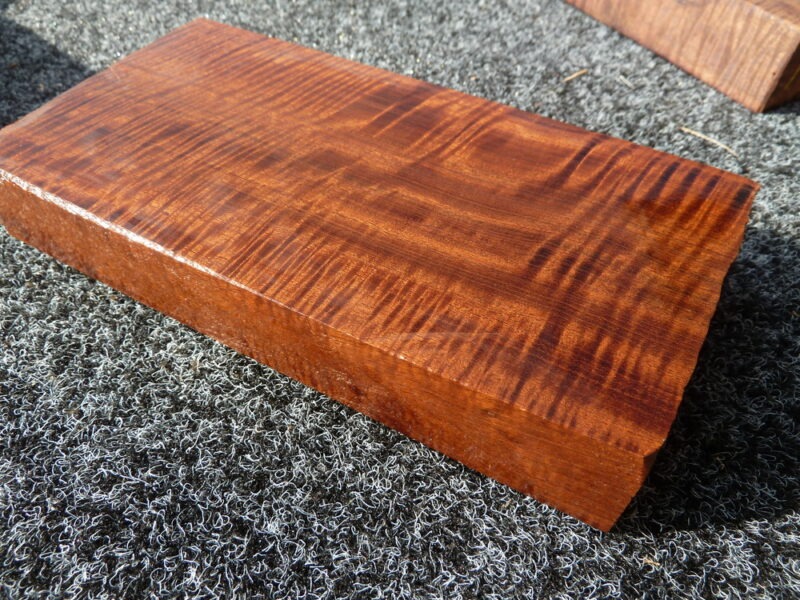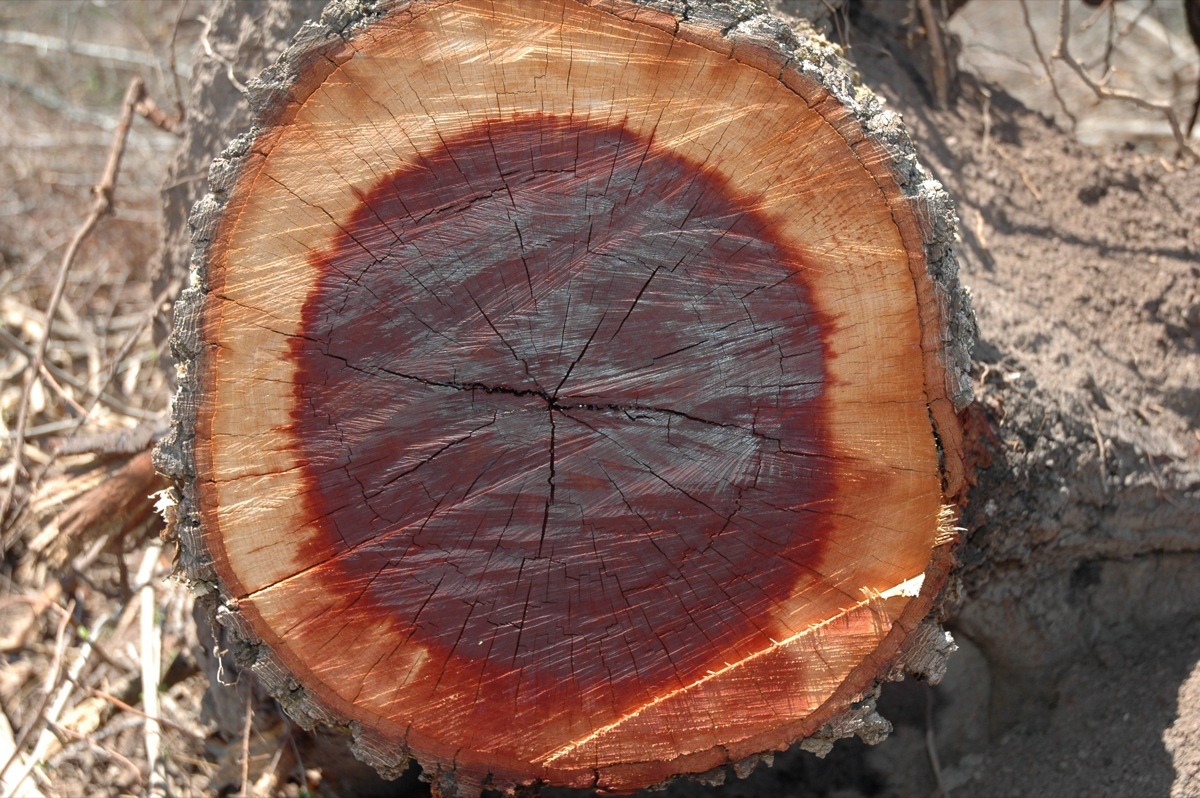Presently, the world is home to over 100,000 distinct varieties of wood. The hardness of each type is identified using the Janka Wood Hardness Scale, measured in pounds-force (lbf). A higher lbf rating indicates a harder wood. In this article, we will explore the top 10+ hardest woods in the world, as determined by their Janka hardness ratings.
Table of Contents
- 1 Australian Buloke Wood – Hardness: 5,060 lbf
- 2 Schinopsis Brasiliensis Wood – Hardness: 4,800 lbf
- 3 Teak Wood – Hardness: 4,740 lbf
- 4 Quebracho Wood – Hardness: 4.570 lbf
- 5 Lignum Vitae Wood – Hardness 4,390 lbf
- 6 Gidgee Wood – Hardness 4,270 lbf
- 7 Snake Wood – Hardness 3,800 lbf
- 8 Vera Wood – Hardness 3,710 lbf
- 9 Camel Wood – Hardness 3,680 lbf
- 10 African Black Wood – Hardness 3,670 lbf
- 11 Black Ironwood – Hardness 3,660 lbf
- 12 Katalox Wood – Hardness 3,660 lbf
Australian Buloke Wood – Hardness: 5,060 lbf
Also known as Australian ironwood or Cow Oak and found throughout Australia, Australia Buloke is the hardest wood in the world.

Information about Australian Buloke wood:
| Height | 9m – 15m |
| Diameter | 3m – 6m |
| Color | Reddish-brown heartwood, the color of sapwood is pale yellow-brown |
| Structure | Good natural shine |
| Durability | Resistant to severe surface impact |
| Hardness | 5,060 Ibf |
| Odor | None |
| Application | Knife handles, flooring, fine art wooden furniture and convenient objects |
Schinopsis Brasiliensis Wood – Hardness: 4,800 lbf
The wood of Schinopsis Brasiliensis is recognized as the second hardest on the standard hardness scale, boasting a rating of 4,800 lbf. This wood species originally hails from Brazil, Bolivia, and Paraguay, but it has now become exclusive to Brazil. Schinopsis Brasiliensis, also known by various names such as Barauna, Quebracho, and Chamacoco, is a flowering plant.
This hardwood mostly thrives in dry, lowland regions, specifically in dry forests and savannas, particularly favoring limestone soils. The alarming level of extinction risk for Schinopsis Brasiliensis restricts its exploitation and commercial utilization.

Information about Schinopsis Brasiliensis wood:
| Height | 10m – 12m |
| Diameter | 50cm – 60cm |
| Color | The sapwood is yellowish white, while the heart is a pale reddish brown |
| Structure | Beautiful color and solid wood grain |
| Durability | Durable |
| Hardness | 4,800 lbf |
| Odor | None |
| Application | Use natural wood, including flooring, tables, and chairs, to decorate all buildings |
Teak Wood – Hardness: 4,740 lbf
Teak wood, scientifically known as Tectona Grandis, belongs to the hardwood category, yet its wood fibers exhibit a notable softness, allowing for cutting by hand. Two distinct types of teak wood, namely Myanmar teak wood and Lao teak wood, are particularly employed in the production of flooring.

Information about Teak wood:
| Height | 30m – 40m |
| Diameter | 0.6m – 0.8m |
| Color | Luxurious dark yellow or brown yellow color |
| Structure | Thick & strong |
| Durability | Though more vulnerable to insect attack than other types of wood, extremely resistant to termites |
| Hardness | 4,740 lbf |
| Odor | Emit a mild aroma after fresh cut |
| Application | Wall cladding and flooring |
Quebracho Wood – Hardness: 4.570 lbf
The name “Quebracho” derives from the Spanish phrase ‘quebrar hacha’, which translates to ‘axe breaker’, highlighting the wood’s remarkable hardness. Its scientific classification is within the Schinopsis spp. of the Schinopsis genus. This wood is found throughout the tropical forests of South America and is recognized as one of the heaviest and hardest woods globally.

Information about Quebracho wood:
| Height | 9m – 15m |
| Diameter | 1m – 3m |
| Color | In certain areas, light brown with deeper black streaks |
| Structure | Even, smooth texture with a beautiful shine |
| Durability | It is resistant to insect infestations, dries slowly, and has a tendency to bend or break after drying |
| Hardness | 4.570 lbf |
| Odor | None |
| Application | Spinning items for exportation, heavy construction, railroad crossings, fence posts, and interior decorations. |
Lignum Vitae Wood – Hardness 4,390 lbf
Lignum Vitae, known scientifically as Guaiacum officinale and G. sanctum, is primarily found in Central America and the northern regions of South America. This wood is frequently utilized for the bearings of propeller shafts on ships due to the natural oils it contains. These oils enable self-lubrication, thereby significantly enhancing the wood’s wear resistance.

Information about Lignum Vitae wood:
| Height | 6m – 10m |
| Diameter | 30cm – 60cm |
| Color | Olive or dark green-brown, nearly black, and occasionally crimson, is the color. The hue of the wood turns progressively deeper with age, especially in direct sunlight |
| Structure | High natural oil content, which makes the naked wood very smooth when polished |
| Durability | Unaffected by sunlight or rain outside, and extremely resilient to pest infestations |
| Hardness | 4,390 lbf |
| Odor | Light scent |
| Application | Pulley wheels, tool handles, bearings, other load-bearing items |
Gidgee Wood – Hardness 4,270 lbf
Gidgee, scientifically named Acacia Cambagei, claims the 6th position on the list of the world’s hardest woods. This dense wood is native to the arid regions of Queensland and the Northern Territory in Australia.

Information about Gidgee wood:
| Height | 6m – 12m |
| Diameter | About 1m |
| Color | Dark brown to medium reddish brown |
| Structure | Smooth surface and deep grain. |
| Durability | Durable |
| Hardness | 4,270 lbf |
| Odor | None |
| Application | Building fences, furniture, musical instruments, and scratch-resistant hardwood flooring |
Snake Wood – Hardness 3,800 lbf
Snake wood, scientifically known as Brosimum guianense, is distinguished by its wood grain, which features spots and veins resembling a snake’s skin. This unique wood is primarily found in the coastal regions of northeastern South America.

Information about Snake Wood:
| Height | 20m – 25m |
| Diameter | 15cm – 30cm |
| Color | Reddish brown with black or brown patterns that contrast. The hue of the tree gets darker with age |
| Structure | High natural gloss to the thick texture |
| Durability | Extended lifespan and resistance to bug assaults |
| Hardness | 3,800 lbf |
| Odor | Mild, pleasant scent |
| Application | Violin bows, tool handles, musical instruments, and interior décor |
Vera Wood – Hardness 3,710 lbf
Vera wood, with the scientific names Bulnesia arborea and Bulnesia sarmientoi, shares many characteristics with Lignum Vitae wood. It is biologically classified within the Zygophyllaceae family and is predominantly found in Central America and Northern South America.

Information about Vera Wood:
| Height | 12m – 15m |
| Diameter | 30cm – 60cm |
| Color | Change from pale olive yellow to green or from dark brown to nearly black after time |
| Structure | Lustrous natural sheen, silky texture |
| Durability | Withstands every effect of the environment |
| Hardness | 3,710 lbf |
| Odor | Nice and light, like a really rare perfume |
| Application | Heavy-duty construction, pulley wheels, boat building, tool handles, and bushings |
Camel Wood – Hardness 3,680 lbf
Camel wood, also referred to as Giraffe spine wood, is native to South Africa. This wood was formerly classified under the genus A. erioloba. However, during the mid-2000s, this large genus underwent a significant reclassification, leading to its division into five separate genera. Consequently, almost all African species, including those previously categorized under A. erioloba, were reassigned to the genera Vachellia or Senegalia.

Information about Camel Wood:
| Height | 9m – 15m |
| Diameter | 30 cm – 60cm |
| Color | Dark reddish mahogany, with golden milk wood |
| Structure | Medium |
| Durability | Long life and strong resistance against insects |
| Hardness | 3,680 lbf |
| Odor | None |
| Application | Firewood, decorative furniture and rotating objects |
African Black Wood – Hardness 3,670 lbf
African Blackwood, scientifically named Dalbergia melanoxylon and also known as African Ebony, was imported and utilized in ancient Egypt thousands of years ago. This wood has a long history of being highly valued for its density, durability, and deep, rich color.

Information about African Black Wood:
| Height | 6m – 9m |
| Diameter | 0.6m – 1m |
| Color | A thin coating of pale yellow wood with a distinct border with the dark section covers the exterior, while the middle will usually be black, with occasional dark brown or purple hues |
| Structure | High natural shine |
| Durability | long-lasting, unable to move or deform, and only mediocrely resistant to borers and insects |
| Hardness | 3,670 lbf |
| Odor | Mild aroma |
| Application | Musical instruments using moving parts and tool handles, such as clarinets and guitars |
Black Ironwood – Hardness 3,660 lbf
Black Ironwood, scientifically known as Krugiodendron ferreum, stands out not only as one of the hardest woods globally but also for its exceptional weight. Regarded as the heaviest wood in both the United States and worldwide, Black Ironwood is primarily distributed in South Florida, the Caribbean, and Central America, as per the latest updates.

Information about Black Ironwood:
| Height | 6m – 9m |
| Diameter | 20cm – 30cm |
| Color | The heartwood is clearly separated from the pale yellow-white sapwood by red, orange, violet, and brown hues |
| Structure | Lustrous natural shine and smooth wood |
| Durability | Possesses strong resistance to termite and insect damage |
| Hardness | 3,660 lbf |
| Odor | None |
| Application | Wood, veneer, trinkets, and sculptures |
Katalox Wood – Hardness 3,660 lbf
Katalox wood, scientifically classified as Swartzia spp. (specifically S. cubensis), is found across Southern Mexico, Central America, and Northern South America. Renowned for its distinct properties and dark hue, Katalox serves as a notable substitute for ebony. Moreover, it is commonly recognized by the name Mexican Royal wood.

Information about Katalox Wood:
| Height | 30m – 40m |
| Diameter | 0.6m – 1.2m |
| Color | Dark reddish brown to nearly black, with some purple tones |
| Structure | The texture of the wood is smooth and robust |
| Durability | Extremely resistant to termites and pests, yet vulnerable to stem borers |
| Hardness | 3,660 lbf |
| Odor | Light oder |
| Application | Wood flooring, wall and ceiling panels, guitars, and other little objects; plush furniture |
If you want to know any more information about wood or need to import African wood, please contact K-Timber immediately. We are currently among the top African wood suppliers, established in 1996, and through nearly 30 years of construction and development, K-Timber has served more than 30 countries. We have a team of wood experts with more than 20 years of experience, ready to answer all questions and advise on the right types of Angola wood for your needs:
- ADDRESS VIET NAM (K-TIMBER): 169 Nguyen Ngoc Vu street, Cau Giay District, Hanoi.
- ADDRESS ANGOLA ( HATC WOOD AFRICAN): Av. Pedro de Castro Van-Dúnem Loy, Luanda, Angola.
- Phone: (+84) 833333914
- Email: [email protected]











